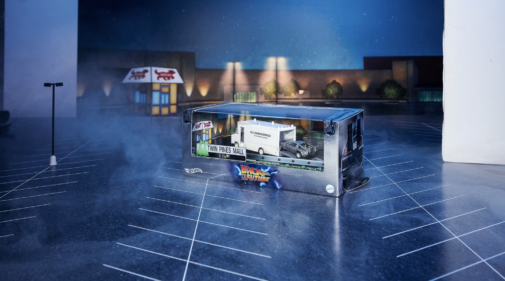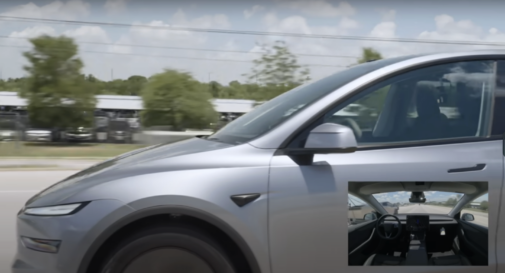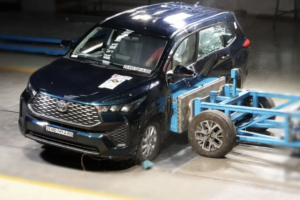
Externally, the Nexon EV shares pretty much everything with the facelifted Nexon. The new front end makes it look more like an SUV than a crossover and the rear end is pretty similar to the outgoing model, but with a few new elements in the rear bumper.
Some of the design elements, however, are exclusive to the electric Nexon, like the piano black front grille with EV badging and blue accents on the foglight surrounds and on the belt line of the car. There is also something Tata calls the tri-arrow on the lower grille. These, of course, are also painted in the same shade of blue as the accents.
One of my favourite parts of the exterior is the paint. The EV-exclusive dual-tone white and blue paint comes with metal flake embedded that shimmers in sunlight, adding additional depth to the surface of the car while 16-inch alloy wheels and a clear LED tail-lamp round out the changes to the car.
Inside, the design is pretty similar to the pre-facelift Nexon, and again, blue accents on the seat with the tri-arrow design let you know you’ve climbed into the all-electric version of the Nexon.
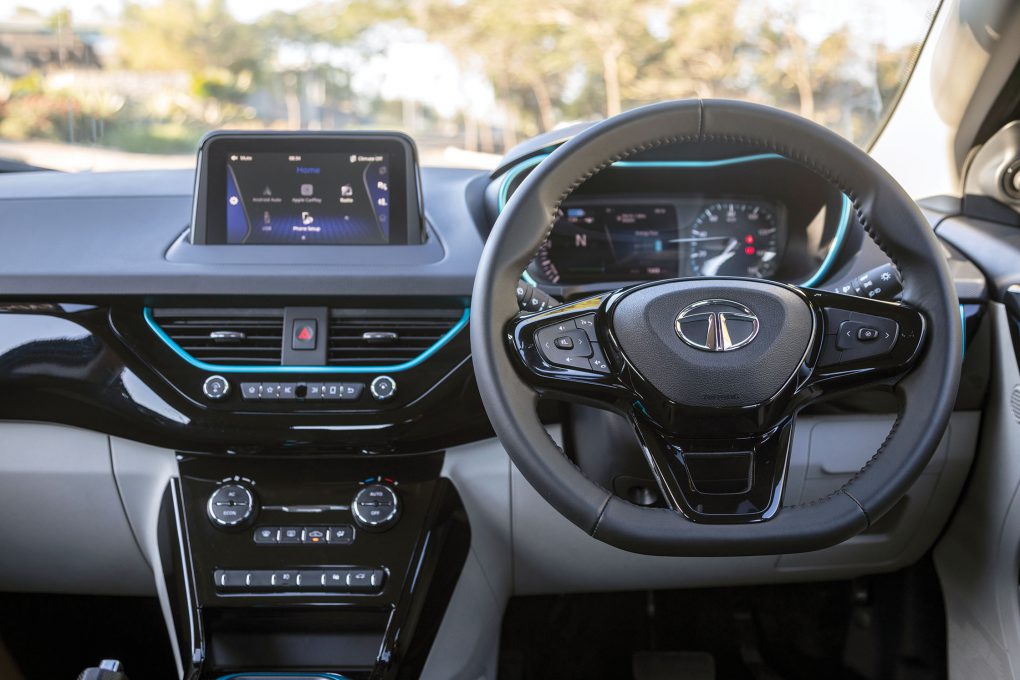
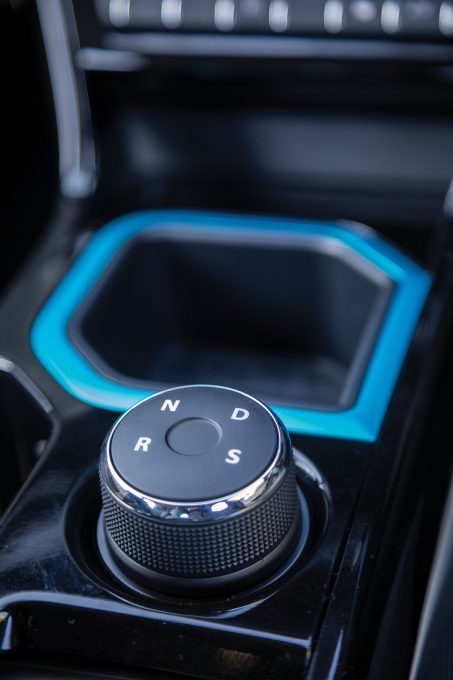
A high-mounted infotainment screen is not too far off your line of sight, so checking directions or changing the music is fairly easy. The instrument cluster is partly digital with an analogue speedometer. The digital display shows you everything you need to know about the battery system, including the charge levels, range, time to full charge as well as a histogram that shows you exactly how much energy you are expending or regenerating. The front seats are well bolstered and pretty comfortable to spend time in, but the rear seats are where Tata spent some significant time optimising the space. Typically, in EVs, the battery pack eats into rear-passenger space leading to awkward seating positions, but in the Nexon EV the battery pack is placed entirely under the floor and rear seats of the car, so there is no compromise in rear seat comfort (we’re looking at you, MG ZS EV).
The Nexon EV is powered by the Ziptron powertrain making 129 bhp and 24.9 kgm of torque. Those numbers aren’t exactly earth-shattering, but remember that electric motors don’t have a torque curve, really, they make all their torque from zero rpm. Like most electric cars, there aren’t gears either; power is sent to the wheels through a single-speed transmission. There are two drive modes, though, D for regular economical driving, and a sportier S mode when you’re in the mood to hustle the EV through traffic. In fact, I recommend leaving it in S all the time and not deal with the frustrating gear-selector knob.
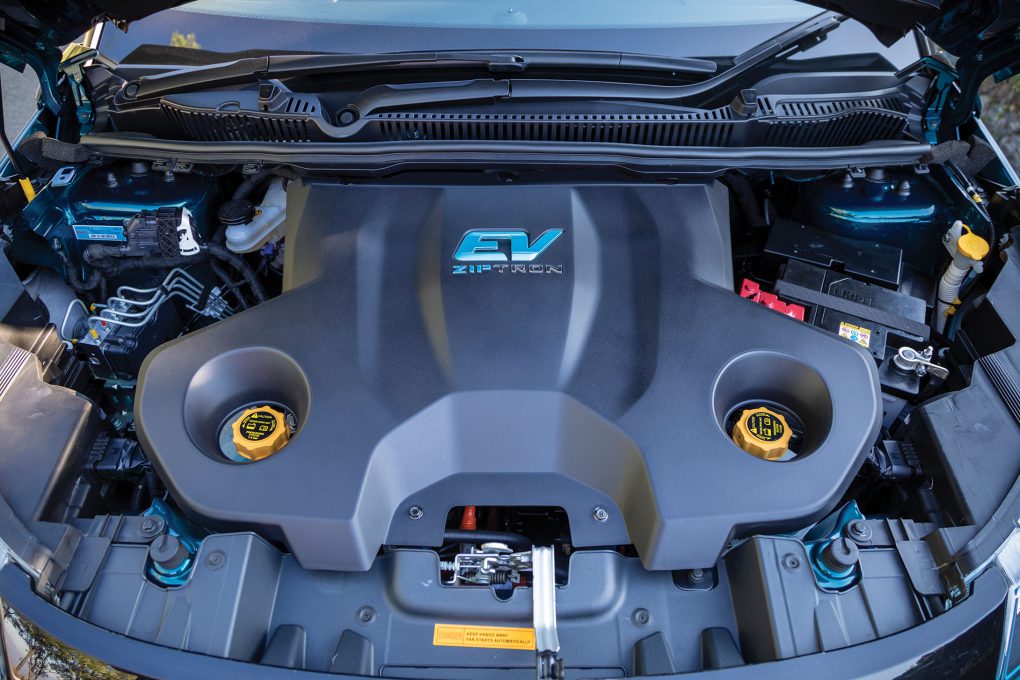
A fully-sealed IP67-rated 30.2-kWh battery provides the juice to the motor, so you don’t have to worry about the monsoons wreaking havoc on your battery. While we’re here, let’s also talk about charging this car. There are no gimmicky openings to the charge port here, its placed exactly where the fuel filler would be in a traditional car (though we suspect it’s to keep costs low); with DC fast-charging, the Nexon EV takes an hour to charge from 0 to 80 per cent charge. The remaining 20 per cent will take you another hour. At home, the car can be charged from 20 per cent to full charge in eight hours with the provided 15W AC charger. The range is rated at 312 km by ARAI, but realistic numbers will be close to 250 km which is enough for city usage. While Tata itself isn’t working on installing any infrastructure for the charging grid, it has tied up with Tata Power to provide charging support for the EVs. In case you run out of juice while you’re out and about, roadside assistance will arrive and charge the car enough to take you to the nearest charging station. Neat.
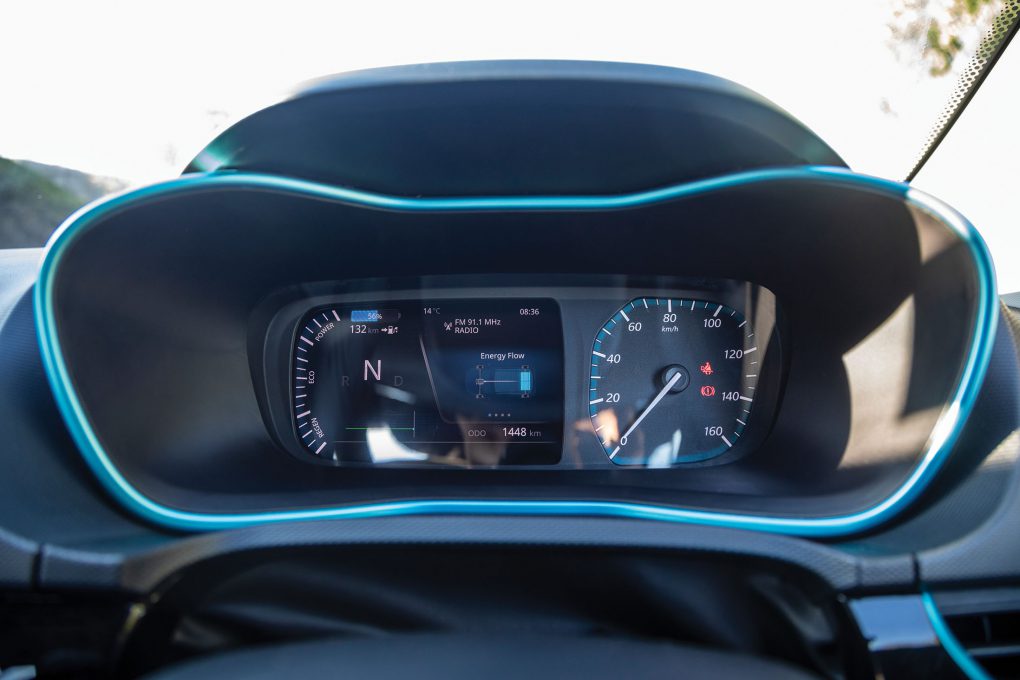
The Nexon EV rides pretty well on rough roads. The suspension takes most of what you throw at it without complaining. Because the battery pack is under the floor of the car, the ground clearance is reduced to 205 mm from the 209 mm of the regular Nexon. All that aside, the Nexon EV is actually fun to drive. Instant torque from the electric motor and the low rolling resistance tyres mean that in S mode, the car is a proper burnout machine! And the weight distribution front to back is 50:50, perfectly balanced, like all things should be! Combine all this with the lowered center of gravity because of the battery pack, low-down in the car and you have a very capable machine. I do wish the steering had a little more feel and feedback; as it stands, that’s the only thing standing between you and a completely depleted battery because you spent the day going up and down your favourite road. I also wish there were adjustable levels of power regeneration so you could turn it all the way up and use only the accelerator pedal to control the car, but system used has been set at an optimised level for all conditions.

AUTODATA
Tata Nexon EV
POWERTRAIN
Type: 30.2 kWh battery-powered electric motor
Max power: 129 bhp
Max torque: 24.9 kgm
Transmission: Single-speed
TYRES
F/R: 215/60 R16
Dimensions
L/W/H (mm): 3994/1811/1607
Wheelbase: 2498 mm
Ground clearance: 205 mm
PRICE: Rs 13.99 to 15.99 lakh (ex-showroom, Mumbai)









